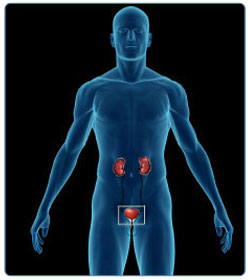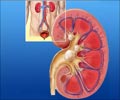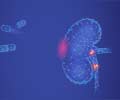Types of Stones
There are four major types of kidney stones.
- Calcium stone - most common type
- Struvite - infection stone
- Uric acid stone
- Cystine stone
The most common type of stone contains calcium (KAL-see-um). Calcium is a normal part of a healthy diet. Calcium that is not used by the bones and muscles goes to the kidneys. In most people, the kidneys flush out the extra calcium with the rest of the urine.
A struvite (STROO-vite) stone may form after an infection in the urinary system. These stones contain the mineral magnesium (mag-NEE-zee-um) and the waste product ammonia (uh-MOH-nyuh).
A uric (YOOR-ik) acid stone may form when there is too much acid in the urine. If you tend to form uric acid stones, you may need to cut back on the amount of meat you eat.
Cystine (SIS-teen) stones are rare. Cystine is one of the building blocks that make up muscles, nerves, and other parts of the body. Cystine can build up in the urine to form a stone. The disease that causes cystine stones runs in families.
Kidney stones may contain various combinations of chemicals. The most common type of stone contains calcium in combination with either oxalate or phosphate. These chemicals are part of a person's normal diet and make up important parts of the body, such as bones and muscles.
A less common type of stone is caused by infection in the urinary tract. This type of stone is called a struvite or infection stone. Much less common are the uric acid stone and the rare cystine stone.
Stones in the urinary tract can occur in kidneys, ureter or bladder. In developing countries where there is higher incidence of malnutrition bladder stones are more common.

























